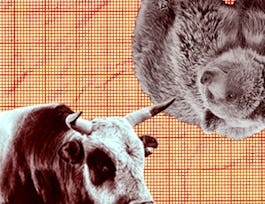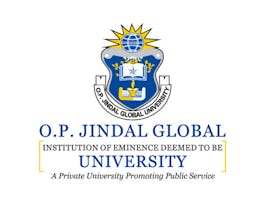You will review the evolution of the Korean economy decade by decade since Korea’s independence from Japan in 1945. Major policies of each decade will be explained and their effect on the Korean economy will be analyzed. Also, the backgrounds and limitations of important policies will be scrutinized. By doing so, you will be able to compare the Korea experience with the other developing countries’.



The Korean Economic Development

Instructor: Doo Won Lee
Sponsored by InternMart, Inc
19,324 already enrolled
(400 reviews)
Skills you'll gain
Details to know

Add to your LinkedIn profile
8 assignments
See how employees at top companies are mastering in-demand skills


Earn a career certificate
Add this credential to your LinkedIn profile, resume, or CV
Share it on social media and in your performance review

There are 9 modules in this course
Module 1. Introduction I: This module introduces initial conditions of the Korean economy at the time of independence from Japan in 1945. Upon describing unfavorable initial conditions, it summarizes three major achievements of the Korean economic development after the Korean War (1950-1953). Module 2. Introduction II: In order to explain the determinant factors of the Korean economic success, this module provides two approaches. First, it introduces neoclassical growth model, and explains how each production factor has contributed to economic growth. Second, it introduces institutional approach, which emphasizes the role of the government. Also, it shows the strength and weakness of the Korean economy.
What's included
3 videos1 assignment
Module 3. From independence to the War: After independence from Japan, the newly established Korean government has implemented two meaningful reforms; land reform and educational reform. Main contents and implications of these reforms are explained. This module also introduces economic impact of the Korean War.Module 4. Import Substitution Policy of the 50s: After the Korean War, the Korean government needed to stabilize the hyper-inflation from the mid-1950. Also, IS (import substitution) polices were employed to achieve industrialization and growth. This module introduces major policy tools of IS, and its results.Module 5. The Role of Economic Aid: This module introduces the size and role of economic aids on the Korean economy during the 1950s. It also compares Korea to the other developing countries in terms of aids policies. It also briefly introduces the history of ODA (official development assistance) in Korea.
What's included
5 videos1 assignment
Module 6. Export Promotion of the 60s: From the early 1960s, Korea has changed its development strategy from IS (import substitution) to EP (export promotion). This module introduces backgrounds, major policies, and results of EP policies. Also it compares the Korean experiences of EP to those of Japan. Module 7. Five Year Development Plan and Mobilization of Capital: This module explains how the Five Year Development Plans were launched from the early 1960s. Also, it introduces efforts of the Korean government to mobile capital inside and outside Korea during the 1960s.
What's included
4 videos1 assignment
Module 8. Heavy and Chemical Industrialization (HCI) of the 70s: From the early 1970s, Korea has aggressively pursued HCI (heavy and chemical industrialization) policies. This module explains backgrounds, major policies, and main results of HCI policies.Module 9. Side-effects of HCI and Oil Shocks: This module introduces some side-effects of aggressive HCI (heavy and chemical industrialization) policies. It explains how these side-effects are inter-related with each other. Also, it introduces impacts of oil shocks on the Korean economy during the 1970s, and explains how the Korean economy recovered from oil shocks.
What's included
5 videos1 assignment
Module 10. Crisis Management & Structural Reform and Trade Liberalization of the 80s: The Korean economy was close to foreign exchange crisis in the early 1980s. This module explains how Korea could avoid the crisis and stabilize the economy by the mid-1980s. It also introduces structural reforms and trade liberalization reforms. Module 11. Three Lows & Economic Boom of the 1980s: This module introduces favorable international environments called ‘three-lows’, which emerged from the mid-1980s. It introduces backgrounds of three-lows, and explains how these three-lows helped the Korean economy to enjoy the unprecedented economic boom. Also, it introduces how the democratization of the Korea society has influenced the economy.
What's included
3 videos1 assignment
Module 12. The Early 1990s: In the early 1990s, the Korean economy has faced the end of high growth era. However, the Korean economy has failed to adapt itself to slower growth, and the problem of ‘high costs and low efficient’ economic structure emerged.
What's included
1 video1 assignment
Module 13. 1997 Asian Financial Crisis I: In the end of 1997, the Korean economy fell into foreign exchange crisis and had to be bailed out by IMF (international monetary fund). This module explains the internal and external causes of the 1997 Asian Financial Crisis. Module 14. 1997 Asian Financial Crisis II: In order to recover from the 1997 Asian Financial Crisis, the Korean government and IMF implemented four major reforms in the area of financial sector, corporate sector, labor market, and government. This module introduces main contents of these reforms, and explains how they helped the Korean economy to recover from the crisis. Module 15. 1997 Asian Financial Crisis III: This module introduces some side-effects and controversial issues with respect to the 1997 Asian Financial Crisis. Also, it explains about implications of the 1997 crisis on the Korean economy.
What's included
4 videos1 assignment
Module 16. 2008 Global Financial Crisis & Beyond: In September, 2008, the global economy fell into financial crisis after the collapse of Lehman Brothers. This module explains how the 2008 global financial crisis affected Korea, and also explains how Korea has recovered from it. Module 17. 2008 Global Financial Crisis & Beyond: This module introduces implications of the 2008 global financial crisis on the Korean economy. Also, it shows the most recent picture of the Korean economy by introducing strength and weakness of the Korean economy.
What's included
5 videos1 reading1 assignment
What's included
1 peer review
Instructor

Offered by
Why people choose Coursera for their career




Learner reviews
400 reviews
- 5 stars
83.83%
- 4 stars
14.42%
- 3 stars
0.99%
- 2 stars
0.49%
- 1 star
0.24%
Showing 3 of 400
Reviewed on Jul 4, 2017
Great course, because you can learn about different policies and the neccesity to do changes when something is not working, due to nothing is going to be the best forever.
Reviewed on Aug 14, 2021
Thank you Professor Lee for this wonderful course. All the lectures were amazing and every concept was clearly understandable. I had a really great time learning about this!
Reviewed on Jul 26, 2020
This class was great for economics or non-economics student who want to learn about the Korean economic development time over time
Recommended if you're interested in Social Sciences

Rice University

Sapienza University of Rome

Google Cloud

O.P. Jindal Global University

Open new doors with Coursera Plus
Unlimited access to 10,000+ world-class courses, hands-on projects, and job-ready certificate programs - all included in your subscription
Advance your career with an online degree
Earn a degree from world-class universities - 100% online
Join over 3,400 global companies that choose Coursera for Business
Upskill your employees to excel in the digital economy


